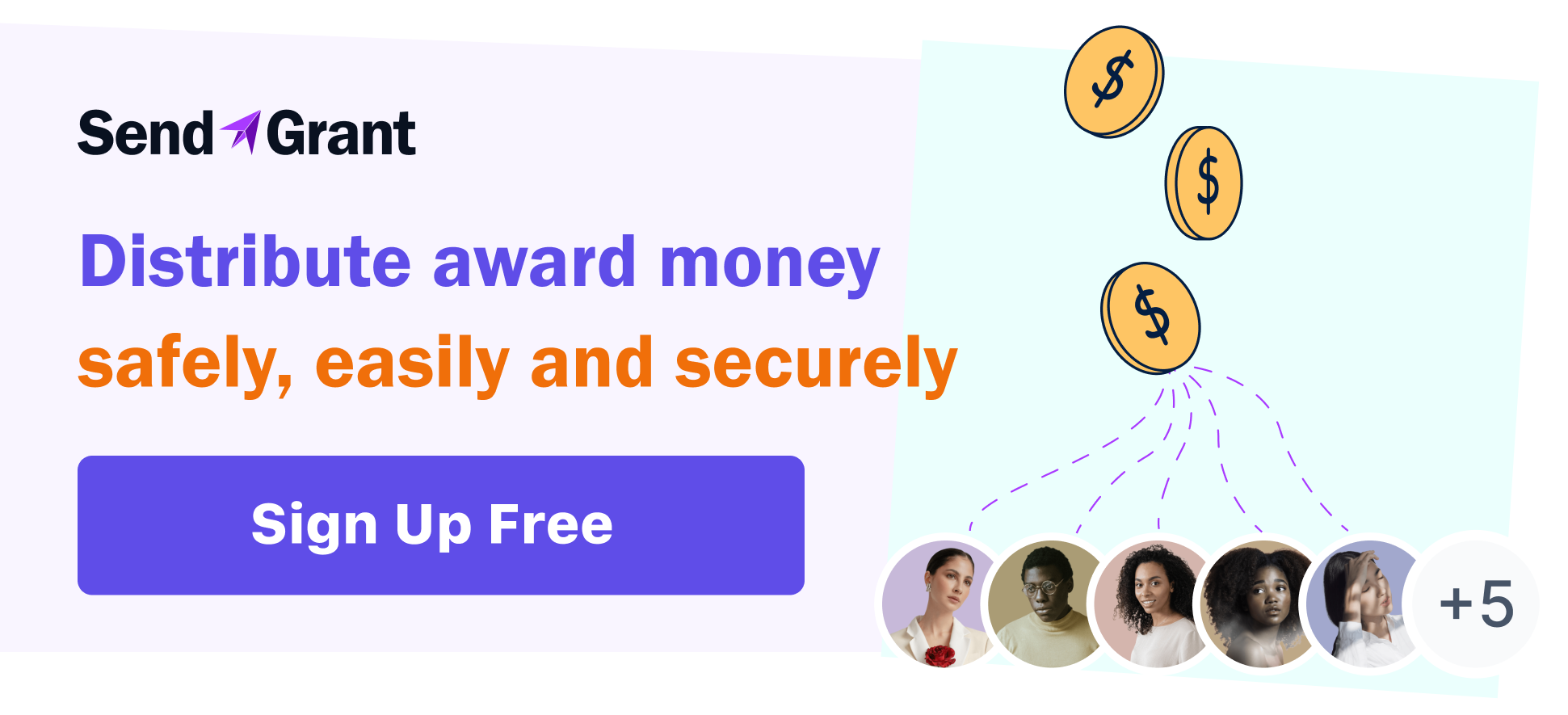How to Manage Grants Vs Scholarships
Have you ever found yourself scratching your head, wondering how to manage grants vs scholarships? If so, we can tell you without a shadow of a doubt - you're not alone. Financial aid is complex, and when it comes to grants vs scholarship management, these two heavy-hitters are similar, but different.
Both play crucial roles in supporting education and various projects. But here's the thing - while both grants and scholarships aim to provide financial assistance, they're far from being identical twins. Each type of aid comes with its own unique set of challenges and requirements that can make even the most seasoned administrator's head spin.
Keep reading as we chat about how to manage grants vs.scholarships - two vital funding sources folks depend on.
Key Differences Between Grants and Scholarships
At first glance, grants and scholarships might seem similar - and don’t get us wrong - they are. After all, they both require an application process. They both end with someone receiving a nice monetary award. They both require you to use the funds in specific ways. However, they also have distinct characteristics that set them apart.
Grants
Grants are typically need-based funds disbursed by government departments, corporations, foundations, or trusts. They often support nonprofit organizations, educational institutions, or specific projects. Grants can be quite diverse in their scope and purpose.
For instance, research grants might fund scientific studies, while community development grants could support local initiatives. Unlike scholarships, grants often come with stringent reporting requirements and may need to be renewed periodically based on project progress or continued need.
Scholarships
On the other hand, scholarships are typically merit-based awards given to students to further their education, reflecting the values and purposes of the donor or founder. Then again, scholarships can also be need-based. However, regardless of how the student acquires the scholarship, it’s intended to be used for educational purposes. Yes, this sometimes includes housing funds, but the primary purpose is to help the student achieve a degree or certificate of educational accomplishment.
Unique Challenges in Grants vs. Scholarship Management
When it comes to managing grants and scholarships, organizations face distinct hurdles for each type of funding. Let's break it down:
Grant Management Challenges:
- Complex Regulatory Requirements: Grants often come with stringent rules and regulations, especially government grants. Keeping up with these can be a full-time job in itself.
- Detailed Reporting: Grantors typically require comprehensive reports on how funds are used, which means meticulous record-keeping and data analysis.
- Project Tracking: Unlike scholarships, grants often fund specific projects. This requires careful monitoring of project milestones, outcomes, and budget allocation.
- Fund Usage Oversight: Ensuring that grant money is used strictly for its intended purpose can be tricky, especially for large or long-term projects.
Scholarship Management Challenges:
- Recipient Selection: Choosing the right scholars often involves evaluating a mix of academic merit, extracurricular activities, and sometimes financial need. Balancing these factors fairly can be complex.
- Ongoing Eligibility: Many scholarships require students to maintain certain GPAs or other criteria. Tracking this over time adds another layer of management.
- Diversity and Inclusion: There's often pressure to ensure scholarship programs are equitable and inclusive, which requires careful consideration in the selection process.
- Long-term Impact Assessment: Measuring the long-term impact of scholarships on students' lives and careers can be challenging but is often expected by donors.
While both grants and scholarships require careful oversight, the focus of that oversight differs significantly. Grant management tends to be more project-oriented and compliance-heavy, while scholarship management is more people-focused, often extending beyond the initial award to track student success.
To tackle these challenges effectively, many organizations are turning to specialized software solutions. These tools can help streamline application processes, automate tracking and reporting, and ensure compliance with various requirements. Additionally, secure fund distribution systems can help create a clear audit trail, which is crucial for both grants and scholarships.
Tracking Success: Setting Up Separate Systems
Effective grants vs. scholarship management hinges on establishing robust tracking systems tailored to each funding type. For grants, this often involves monitoring project milestones, budget allocation, and outcome measurements. Organizations need to set up systems that can handle detailed financial tracking and project-specific data to ensure compliance with grantor requirements.
Scholarship tracking, on the other hand, typically focuses on student progress, academic achievements, and sometimes post-graduation outcomes. These systems need to be designed to manage individual student data over time, including GPA maintenance, enrollment status, and potentially career outcomes. The goal is to demonstrate the scholarship's impact on students' educational journeys and long-term success.
The Application Avalanche: Managing the Process
Grant applications often require detailed project proposals, budgets, and organizational information. Managing this process involves organizing complex documents, coordinating review committees, and ensuring all required information is complete. It's crucial to have a system that can handle large volumes of data and facilitate thorough evaluation of project feasibility and alignment with funding goals.
Scholarship applications, in contrast, typically focus on personal statements, academic records, and sometimes creative submissions/essays. The management challenge here lies in efficiently processing a high volume of individual applications, often with varying requirements based on the scholarship type. Effective systems need to streamline the collection and organization of student-specific data for fair and comprehensive evaluation.
Cream of the Crop: Implementing Selection Criteria
Selecting the right recipients is crucial for both grant and scholarship programs. Grant selection often involves assessing project feasibility, potential impact, and alignment with the funder's goals. Scholarship selection typically considers academic performance, extracurricular activities, and sometimes, financial need.
SmarterSelect offers robust evaluation tools that can be customized for different selection criteria. Its scoring system allows evaluators to rate applications based on predefined rubrics, making the selection process more objective and efficient. For grant programs, these features can be used to assess project proposals, while scholarship programs can leverage them to evaluate student applications comprehensively.
Show Me the Money: Disbursement Strategies

Grant disbursement often follows a project-based timeline, with funds released in installments as milestones are met. This requires a system for tracking project progress, verifying completion of agreed-upon objectives, and releasing funds accordingly. It's crucial to maintain clear records of each disbursement and its corresponding project stage to ensure transparency and accountability.
Scholarship disbursement, however, is typically aligned with academic calendars, often occurring semesterly or annually. The focus here is on verifying student enrollment, ensuring continued eligibility, and coordinating with educational institutions. Effective scholarship disbursement systems need to handle recurring payments and adapt to changes in student status or academic performance.
Dotting the I's and Crossing the T's: Compliance and Reporting
Grant compliance and reporting often involve detailed financial statements, project progress reports, and outcome measurements. Organizations need robust systems to track every dollar spent, document project activities, and demonstrate adherence to grant terms. Regular reporting to grantors is crucial, often requiring compilation of complex data into clear, comprehensive reports.
Scholarship compliance and reporting typically focus on student progress, fund usage, and program impact metrics. This involves tracking academic performance, verifying continued eligibility, and sometimes monitoring post-graduation outcomes. Reporting often centers on demonstrating the scholarship's impact on educational access and student success, requiring systems that can track individual student data over time.
Measuring Success: The Impact of Grants vs Scholarships
Assessing grant impact often involves quantifying project outcomes, societal benefits, or research advancements. This requires systems capable of collecting and analyzing diverse data types, from financial metrics to community impact indicators. Long-term tracking is often necessary to demonstrate sustained effects of grant-funded projects.
Measuring scholarship impact typically focuses on student success rates, career achievements of recipients, and broader educational access metrics. This necessitates systems for long-term tracking of student outcomes, potentially years after graduation. The challenge lies in maintaining connections with scholarship recipients and gathering meaningful data on their educational and career trajectories.
Keeping Donors in the Loop: Relationship Management
For grants, donor relationships often center on project outcomes and financial stewardship. Regular updates on project progress, challenges, and successes are crucial. Systems need to facilitate the compilation of project data into engaging reports that demonstrate the tangible impact of the donor's investment.
Scholarship donor management typically involves sharing student success stories and overall program impact in the community. This requires systems that can collect and present student achievements, testimonials, and long-term outcomes in a compelling manner. The focus is often on illustrating how the scholarship has transformed individual lives and contributed to broader educational goals.
From Application to Distribution: The Perfect Funding Duo

Managing both grants and scholarships effectively requires a nuanced understanding of their unique characteristics and challenges. This is where the powerful combination of SmarterSelect and SendGrant comes into play, offering a comprehensive solution for organizations handling these vital funding sources.
SmarterSelect excels in streamlining the application and review process for grants, scholarships, and other awards. Its robust features allow for customized application forms, efficient evaluation tools, and detailed tracking of applicant data.
Meanwhile, SendGrant takes over seamlessly when it's time to distribute the funds, providing a secure and compliant way to disburse awards while creating a clear audit trail. This dynamic duo addresses the entire lifecycle of grant and scholarship management, from initial application to final fund distribution.
Leverage these integrated solutions and your organization can significantly reduce administrative burden, ensure compliance, and maximize the impact of funding programs. Whether you're dealing with complex grant projects or nurturing the next generation of scholars, SmarterSelect and SendGrant offer the flexibility and functionality to meet your needs.
Click here to learn more about SmarterSelect, and click here for a free trial of SendGrant!



